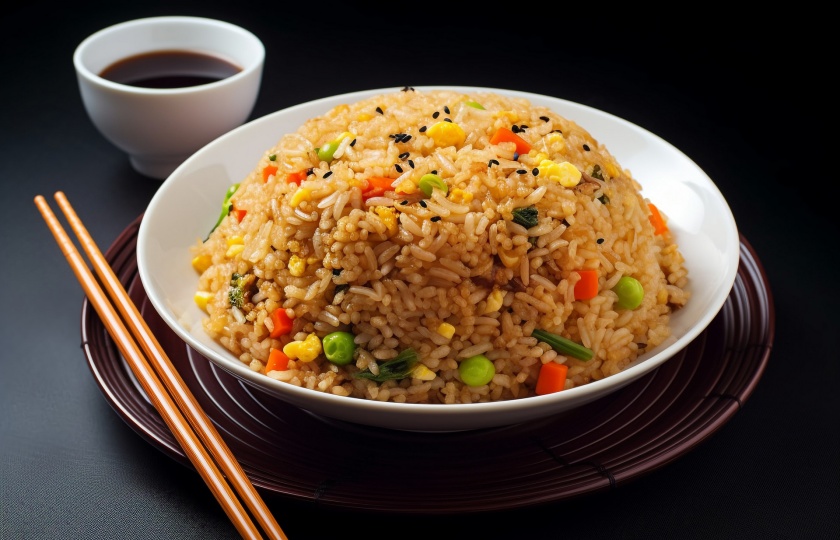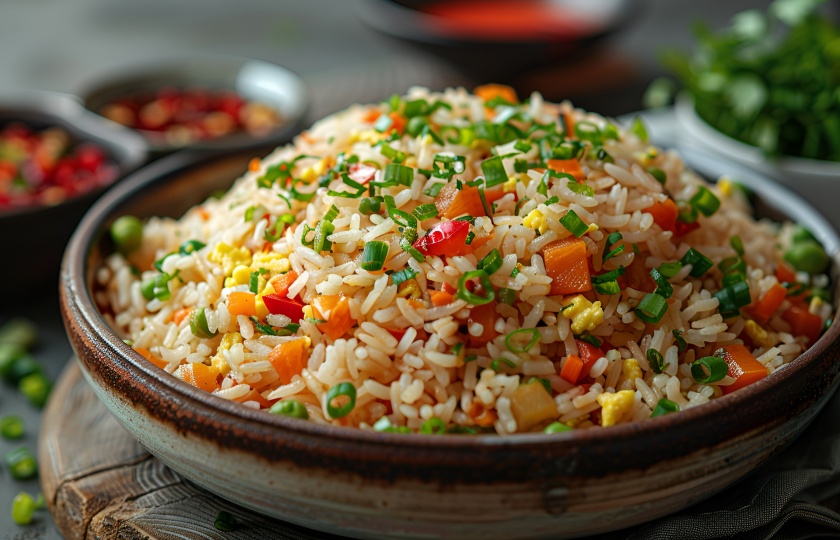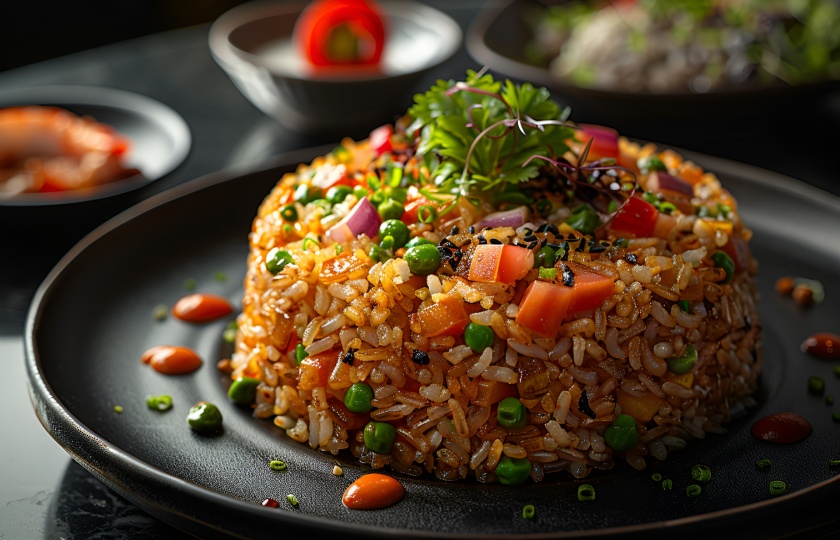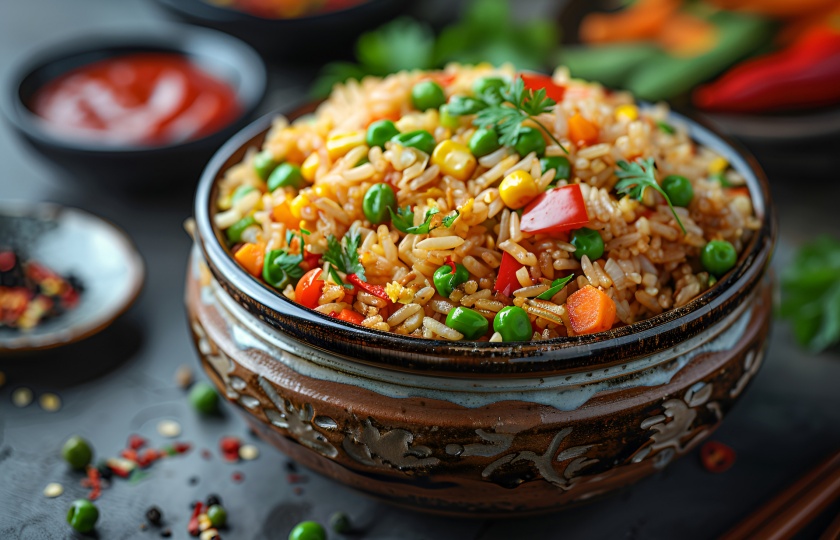Gluten-Free Tips: How Asian Restaurants Make Fried Rice Gluten Free

When I worked in an Asian restaurant before, there were often customers asking for gluten-free fried rice. We also made a lot of gluten-free fried rice. One of them is super great. Today I will share it. Come and see "How does an Asian restaurant make gluten-free fried rice"!
How do Asian restaurants make fried rice gluten free?
In making gluten-free fried rice in an Asian restaurant, there are several points that are quite important.First of all, in the choice of rice, high-quality long-grained rice is usually selected, such as Thai fragrant rice. Long-grained rice is distinct and the fried rice is extremely delicious.
Secondly, there is also a knack in side dishes. For classic gluten-free fried rice, eggs are indispensable. Beat the eggs and fry them until they are small golden-yellow pieces, which is especially fragrant.
Then add your favorite meat. For example, if you like pork, you can cut the pork into small pieces and fry them until they change color with a small amount of oil to fully release the meaty aroma.
Then match some vegetables. Cut carrots into dice, onions into shreds, and broccoli into small florets. The combination of these vegetables can make the fried rice nutritious and delicious.
Finally, seasoning is also an extremely important link. Soy sauce for Chinese fried rice is essential. It can not only color the fried rice but also enhance the freshness. Finally, sprinkle some pepper and salt. If you like scallions, you can also add a little to add fragrance.
What is the secret ingredient in Chinese fried rice?
The reason why Chinese fried rice is so popular is that in addition to superb cooking skills, the selection of ingredients and the combination of seasonings are also very important.

First of all, high-quality rice will be selected. Finally, long-grained rice that is naturally pollution-free will be purchased. Long-grained rice not only tastes good, but also the fried rice is very beautiful.
Secondly, in terms of seasoning selection, there are several seasonings that can be said to be the "soul" of Chinese fried rice. First of all, eggs. It is almost an essential ingredient for all Chinese fried rice. It can add rich taste and nutritional value to fried rice. Secondly, scallions. The fragrant smell of scallions can enhance the taste of fried rice.
In addition, side dishes like carrots, peas, ham, and shrimp are also indispensable for Chinese fried rice. They are not only brightly colored and nutritious, but also can make the taste of Chinese fried rice diversified.
In terms of seasoning, seasonings such as light soy sauce, soy sauce, salt, and pepper are also essential. These traditional Chinese seasonings can help adjust the taste of fried rice and make Chinese fried rice more delicious.
Finally, there are various kinds of Chinese fried rice. When making fried rice, you can add cumin powder, chili oil, etc. according to your own taste preferences for seasoning.
Why does Chinese restaurant fried rice taste so good?
The reason why Chinese fried rice is delicious is that in Chinese terms, it has "wok hei". As long as you observe carefully, you will find that the stoves in Chinese restaurants are particularly powerful. The strong firepower can make the fried rice fully heated in a short time. Chinese chefs will quickly stir-fry and let the rice "dance" in the pot. The fried rice produced under this high-temperature quick stir-frying has a unique charred aroma.Moreover, Chinese restaurants are particularly careful in the selection of ingredients. They will choose high-quality rice and also match rich side dishes. Whether it is shrimp, barbecued pork or vegetables, they are carefully selected. Can the taste of all fresh ingredients blend with each other and not be delicious?
Secondly, it lies in seasoning. Chefs are very good at using various seasonings to create rich flavors. For example, through a unique proportion of salt, light soy sauce, dark soy sauce, oyster sauce, etc., the fried rice has both a salty and fragrant taste and a delicious feeling. Some even add some secret sauces, which is the key to making the deliciousness of fried rice even better.
Finally, it is skill. Chefs will first break up the rice so that each grain of rice can be evenly heated and coated with seasonings. And they know when to put in the ingredients and how to stir-fry to make the ingredients and rice perfectly combined. These experiences and skills make the fried rice in Chinese restaurants highly praised.
What gives Chinese fried rice its flavor?
There are many considerations behind why Chinese fried rice is so delicious.
First of all, the rice is very crucial. There are many good rices in China. For example, Northeast rice has full grains and the cooked rice has its own aroma. This aroma is the soul of fried rice. Moreover, the rice must be cooked just right and be a little harder. Only in this way can the fried rice be distinct.

Secondly, the ingredients are rich and diverse. China is a vast country with its own characteristic ingredients everywhere. For example, Yangzhou fried rice contains ham, shrimp, green peas, eggs, etc. These ingredients are mixed together, and the taste and flavor are extremely rich. The saltiness of ham, the freshness of shrimp, the sweetness of green peas, and the mellowness of eggs are combined together to make the taste of fried rice have distinct layers.
Then comes the seasoning. Chinese cuisine is very particular about using seasonings. Light soy sauce, dark soy sauce, oyster sauce, cooking wine, chicken essence, etc. Light soy sauce enhances freshness, dark soy sauce colors, oyster sauce enhances fragrance, cooking wine removes fishy smell, and chicken essence enhances freshness. When these seasonings are matched in proportion, the taste of fried rice comes out, salty and delicious.
Finally, it is the cooking method. Chinese fried rice pays attention to heating the pan and then adding cold oil. The pan is heated first and then oil is poured. In this way, the rice will not stick to the pan. Stir-fry quickly over high heat so that the rice and ingredients are quickly heated. The rice grains can absorb the taste of seasonings and also stir-fry a unique charred aroma. This is also the key to the flavor of Chinese fried rice.
Do Chinese restaurants use butter in fried rice?
Generally speaking, for traditional Chinese fried rice, such as Yangzhou fried rice and Guangdong fried rice, butter will not be used as cooking oil. Chinese fried rice is more inclined to use vegetable oils such as peanut oil, soybean oil, rapeseed oil and other edible oils.

But in modern catering, innovation and the combination of Chinese and Western have become a trend. So some Chinese restaurants will try to use butter when frying rice to increase the aroma and taste levels of fried rice.
This innovative approach is more common in some high-end restaurants or fusion cuisines. Butter has a rich aroma and creamy texture, which can add a touch of Western flavor to fried rice and make it more unique and attractive.
What is the most basic and important seasoning for Chinese food?
There are relatively many types of seasonings used in Chinese cuisine. The most common ones are salt, soy sauce, vinegar, monosodium glutamate and sugar. Among them, the most important one is soy sauce. Soy sauce can provide unique fragrance and color for dishes. Different types of soy sauce such as light soy sauce, dark soy sauce and very fresh soy sauce also have different uses.
Salt: Salt is the most important among all seasonings and is known as the "king of all flavors". It can add saltiness and flavor to dishes.
Soy sauce: Soy sauce can not only increase saltiness but also provide soy sauce fragrance. Different types of soy sauce (such as light soy sauce, dark soy sauce, and very fresh soy sauce) are suitable for different cooking needs.
Vinegar: Vinegar can not only remove fishy smell and greasiness but also help increase the refreshing taste of dishes.
Monosodium glutamate: Monosodium glutamate is the main type of Chinese seasoning and has the effect of enhancing the umami taste of dishes.
Sugar: Sugar has a sweet taste and can be used to enhance freshness and make dishes more delicious.























